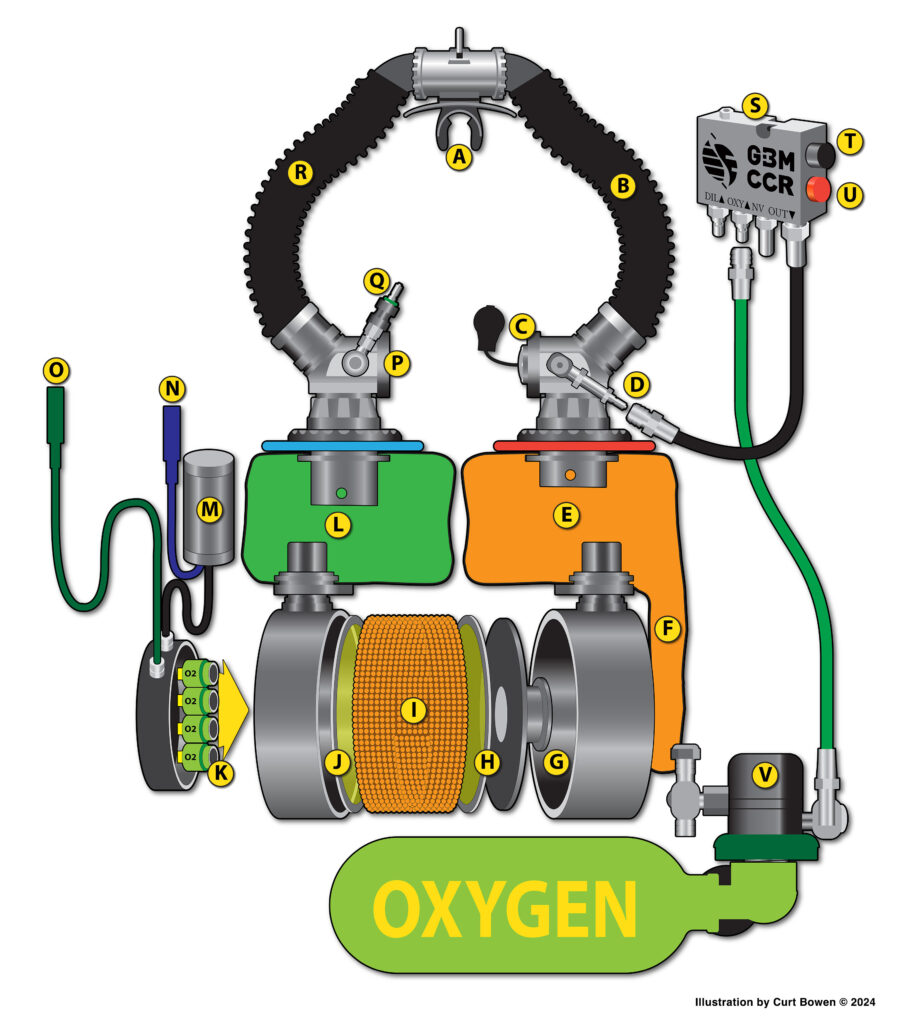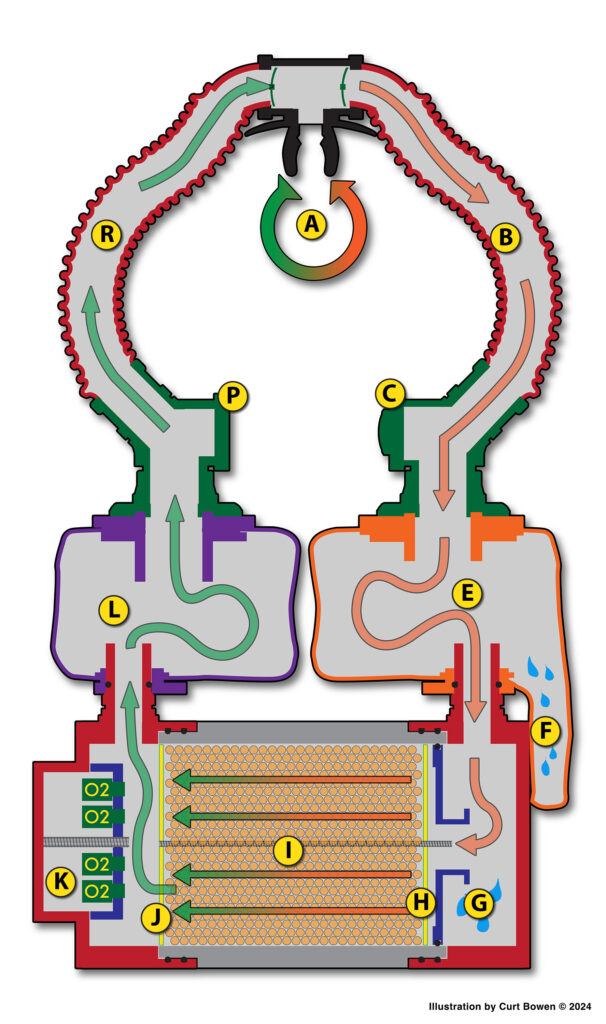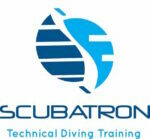Working as a computer scientist, software programmer and infrastructure developer in the telecom industry. I spent lots of time traveling throughout North, Central and South America and the Caribbean islands developing, installing cellular networks and establishing telecom infrastructure.
![]() With a passion for scuba diving and closed circuit rebreathers, I gradually purchased and received training in multiple different units. During this time, I received my technical instructor rating with many of these CCR models. In 2013, I started a technical diver training and equipment service company in New York City called Scubatron. While diving over the years with all these models of rebreathers, I learned to appreciate certain features of some, while being dissatisfied with others. Ultimately, determining that there was no ideal rebreather, as there was always something missing or irritating about each unit.
With a passion for scuba diving and closed circuit rebreathers, I gradually purchased and received training in multiple different units. During this time, I received my technical instructor rating with many of these CCR models. In 2013, I started a technical diver training and equipment service company in New York City called Scubatron. While diving over the years with all these models of rebreathers, I learned to appreciate certain features of some, while being dissatisfied with others. Ultimately, determining that there was no ideal rebreather, as there was always something missing or irritating about each unit.
![]() So, while learning all these units and expressing my strong dislike for something on each, my friends at IANTD suggested I try making my own. That’s how it started – I concluded I should build my own and that it should be a sidemount CCR. I quickly realized that a chest mount design appealed to me the most. The credit for this choice goes to Triton and a few of my cave diving buddies.
So, while learning all these units and expressing my strong dislike for something on each, my friends at IANTD suggested I try making my own. That’s how it started – I concluded I should build my own and that it should be a sidemount CCR. I quickly realized that a chest mount design appealed to me the most. The credit for this choice goes to Triton and a few of my cave diving buddies.
At the beginning of my chest mounted rebreather design phase, I only wanted a unit for myself. There was no thought about building a rebreather for anyone else. While cenote diving in Mexico in 2020, with one of my earlier prototypes, my friend and cave diver Mike Netto and a few of my other “caving” friends asked if I could build them a chest mounted unit. Thus GBM was born. Still in its infancy, I needed to make many upgrades to my homemade chest mounted rebreather before I could sell it as a commercially available product.
![]() I quickly learned that commercial rebreather development and manufacturing is a very expensive and time-consuming endeavor. Changing concepts and designs, each time requiring machining and testing, began to wear heavy on my pocketbook and family budget. Thanks to my wife and the CFO of our family – Yana, who managed our life thru costly “toys” (tools) I had to purchase or order parts through. I thought maybe industrial 3D printing would save money. I was greatly mistaken. In the end, who knows how much money I spent, I finally finished the current GBM CCR design you see today.
I quickly learned that commercial rebreather development and manufacturing is a very expensive and time-consuming endeavor. Changing concepts and designs, each time requiring machining and testing, began to wear heavy on my pocketbook and family budget. Thanks to my wife and the CFO of our family – Yana, who managed our life thru costly “toys” (tools) I had to purchase or order parts through. I thought maybe industrial 3D printing would save money. I was greatly mistaken. In the end, who knows how much money I spent, I finally finished the current GBM CCR design you see today.
![]() Next came the hurdle of a training agency to take my chest mounted unit under its wing. Organizing a meeting with the CEO of IANTD, Luis Augusto Pedro we began the long certification and testing process as well as designing and writing the now available GBM CCR certification courses. Tremendous help came from Chauncey Chapman, who outlined the testing strategy, narrowed configuration choices and developed the schematics for a new ANTSI “breathing” machine, which we together assembled and made to work in order to test the rebreather according to agency specifications. That ANTSI machine, by itself, dramatically reduced costs of conducting different test scenarios. The machine, named SNORT-1, allows anyone who wants to test their rebreather or has “what if” questions related to rebreather usage, access.
Next came the hurdle of a training agency to take my chest mounted unit under its wing. Organizing a meeting with the CEO of IANTD, Luis Augusto Pedro we began the long certification and testing process as well as designing and writing the now available GBM CCR certification courses. Tremendous help came from Chauncey Chapman, who outlined the testing strategy, narrowed configuration choices and developed the schematics for a new ANTSI “breathing” machine, which we together assembled and made to work in order to test the rebreather according to agency specifications. That ANTSI machine, by itself, dramatically reduced costs of conducting different test scenarios. The machine, named SNORT-1, allows anyone who wants to test their rebreather or has “what if” questions related to rebreather usage, access.
![]() After all this work, trial and error, design changes, and a couple boatloads of money, I can honestly say I feel we have come up with one of the best, dependable, simple to train on, lightweight, and easy to travel with chest mounted rebreathers available in 2024.
After all this work, trial and error, design changes, and a couple boatloads of money, I can honestly say I feel we have come up with one of the best, dependable, simple to train on, lightweight, and easy to travel with chest mounted rebreathers available in 2024.
| ||
| ||
| ||
| ||
| ||
| ||
| ||
| ||
| ||
| ||
|


| ||
| ||
| ||
| ||
| ||
| ||
| ||
| ||
| ||
|
